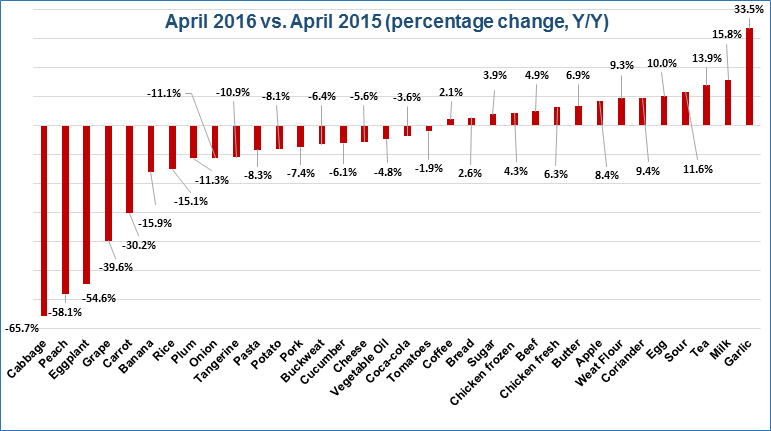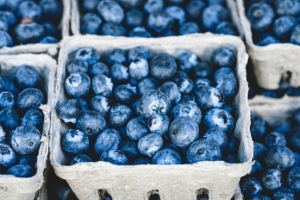Retail Food Price Index: Food Prices Down as Turkish and Iranian Floodgates Open
The ISET Economist, a blog about economics in Georgia and the South Caucasus by the International School of Economics at TSU (ISET)
According to data from the last two weeks of April, retail food prices are down 4.6% year-on-year (y/y) (compared to April 2015) and 0.6% month-on-month (m/m) (compared to March 2016). During those two weeks we saw the biggest drops in the prices of eggplants (21.4%), buckwheat (9.4%) and tomato (9.0%). Only one (!) product increased in price during this period: greens (up 3.8%).
Georgian consumers celebrated all the way to the Easter table
Traditional Georgian households were fasting the last few weeks, which implied reduced consumption of sugar, eggs, dairy products, fish, and meat. Lower demand may have been a factor in keeping food prices at bay, however, the downward trend in prices started more than a month before the Great Lent, in February 2016. This trend has little to do with Georgian religious traditions. Rather, it is best explained by the resetting of Georgia’s economic relations with Iran, on the one hand, and its role as a temporary buffer for Russia-banned Turkish products, on the other.
For now, Georgian consumers emerge as the clear victors from these external geopolitical developments. A few fresh food prices have been slashed by more than 50% y/y. Even the cheapest networks became slightly cheaper. Hard-pressed by their competitors, the most expensive retailers had to make drastic adjustments, leading to a convergence in prices. By mid-April, the gap between the priciest and cheapest retail chains reached its historical minimum since FPI’s launch in fall 2014.
As shown in the chart, the y/y downward trend in food prices is driven mostly by vegetables and fruits, with some of them losing more than half of their price over the last 12 months. Garlic (up 33.5%) is an interesting outlier.

Cabbage (down by 65.7%), peach (by 58.1%) and eggplant (by 54.6%) are the clear leaders in price declines as Georgia is seeing a very significant increase in the supply of these products. During the first three months of 2016, the value of cabbage and eggplant imports increased by 5.8% and 10.9%, respectively, compared to January-March of 2015. Taking into account lower prices, there has been a much higher increase in the quantity (in tons) of cabbage and eggplant imports. The imports of peach increased by a mindboggling 164.6% (in value) compared to January-March 2015. Whereas peach and eggplant are mostly imported from Turkey (and, perhaps, Syria), the main source of cabbage is Iran.
Assuming that the thaw in the political and economic relations with Tehran continues in years to come, Georgia is likely to see its trade with Iran increase many times, expanding beyond basic food products to gas and more sophisticated manufactured goods. The situation is quite different as far as Turkey is concerned. Georgia and Turkey have been for many years operating under a free trade agreement, and the current spike in imports from Turkey reflects nothing but a temporary effort by Turkish producers to dump their perishable products in the Georgian market. Sooner or later, this flood will exhaust itself, not before (potentially) devastating Georgia’s nascent greenhouse industry.












